What do Champagne makers think of this couple’s English sparkling wine?
Attitude heads to a fourth-generation maker of Champagne in France to sample Digby Fine English fizz - and DS Automobiles’ new DS 4 gets us there in style.
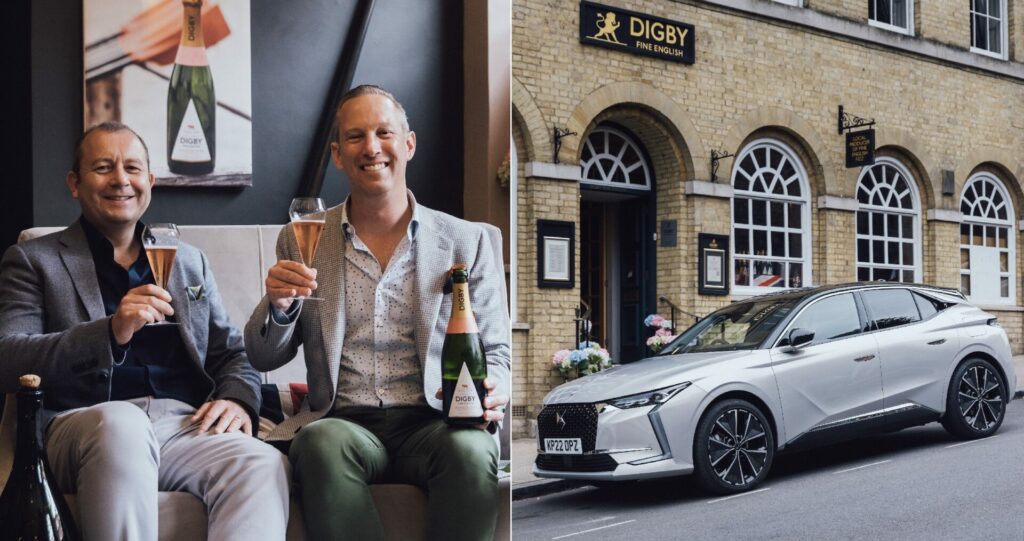
Attitude’s Les Artisans is in partnership with DS Automobiles
It was Robert Louis Stevenson — the Scottish novelist and travel writer best known for Treasure Island and The Strange Case of Dr Jekyll and Mr Hyde — who famously said “I travel not to arrive, but for travel’s sake,” and it’s about an hour into the billiard table-smooth French autoroute from Calais that the penny (or euro cent) drops.
For though I’ve had the most absorbing day in an English vineyard, and am en route to its French equivalent, it’s the bit in the middle I’m enjoying at least as much.
I’m driving a (very) French car, DS Automobiles’ new DS 4, which has been built to encapsulate the design aesthetic of a Parisian fashion brand.
From my leather-trimmed, air-conditioned perch I can see fields of bright yellow sunflowers punctuated by sparkling white wind turbines, popping against a clear, cobalt sky. All about is serene, and life feels good.
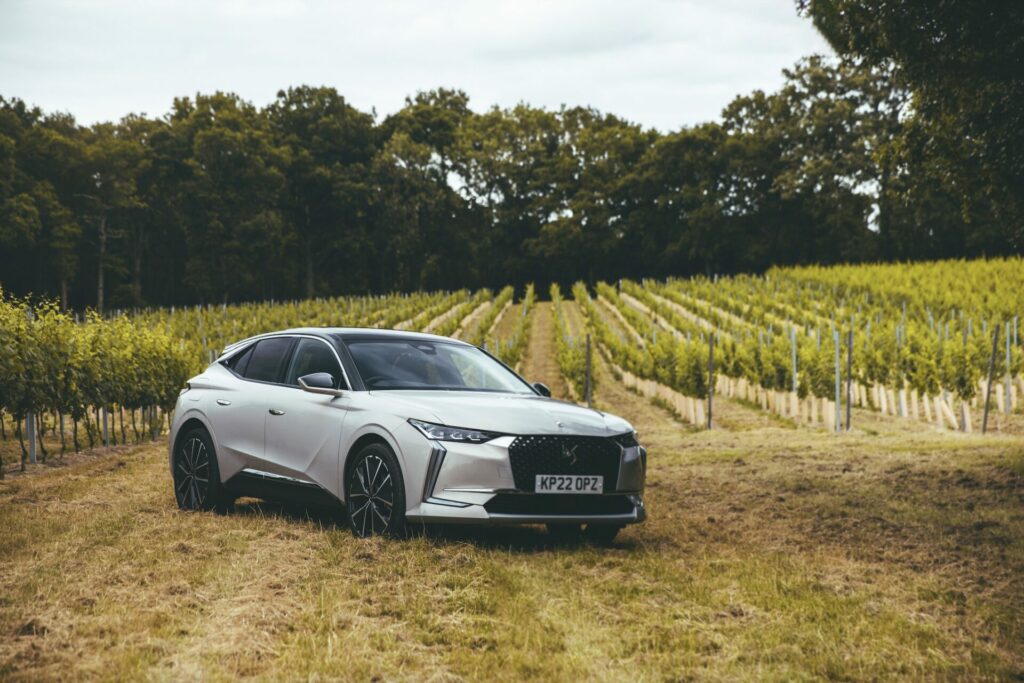
And though I am very much looking forward to the pending promise of a classic rural menu that may well include escargot and will definitely feature some of the region’s wine, for now the thrill is in the journey, in the art of travel.
So I tweak the music volume upwards, offer a sigh of thanks to Gods unknown and push for the distant horizon.
It started, as most things do, with the kernel of an idea that gathered momentum of its own. How might we platform the UK’s most gifted LGBTQ+ entrepreneurs by showcasing their stories and creations?
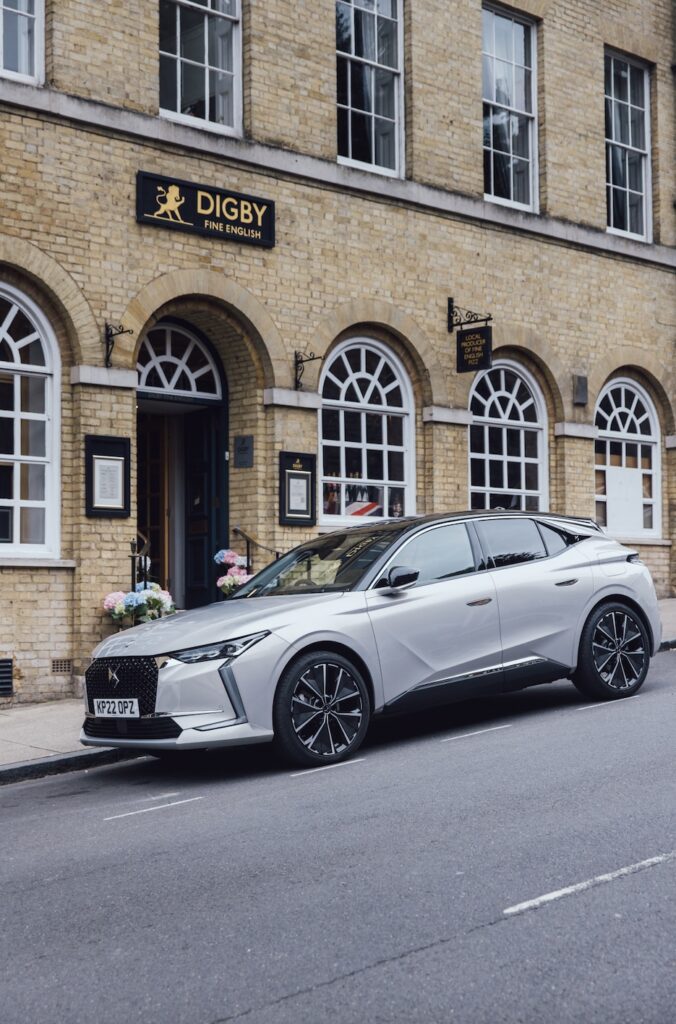
How might we take the most inspired products imagineered by our community and give them context?
Our friends at DS Automobiles, true to their declared penchant for the avant-garde, had the answer: borrow a car, hit the road, talk to some people and then share their experience and what makes them tick. Done and done.
But be warned, as all that you see here (and in the short film made to accompany this story above) may surprise you.
Because, sure, I’m stood alongside food and drink writer and blogger John Gregory-Smith in a vineyard with an intriguing new car from Paris, and I’m going to talk about wine. But don’t assume too much.
Because this is actually the garden of England, the car is a DS 4 — automotive haute couture from the biggest brand you may never have heard of — and our new Attitude series of stories are going to introduce you to Les Artisans: LGBTQ+ entrepreneurs and masters of their craft.
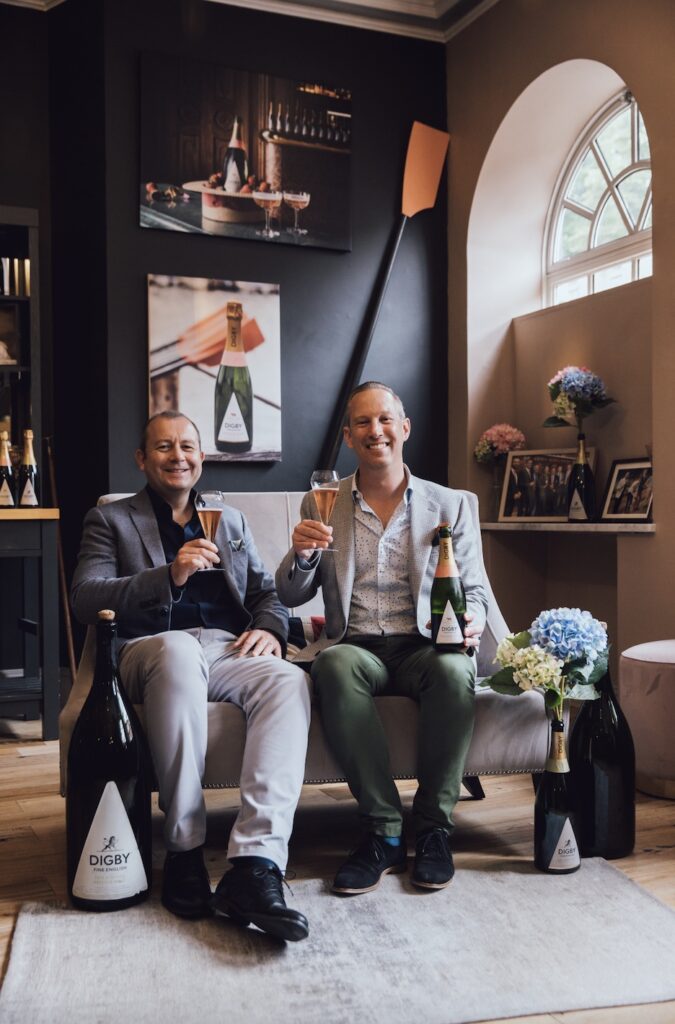
We start with Digby Fine English, an award-winning fizz that is the brainchild of married couple Trevor Clough and Jason Humphries. The grapes are grown at the Digby vineyard near Tonbridge, Kent, and by farmers across the south coast of England.
And the company’s base is in Arundel, West Sussex, where the founders await us at their deliciously named Tasting Room.
But we’ll not be taking Digby’s commitment to the famed ‘méthode Champenoise’ as read. For having seen, heard, and tasted, we’ll be taking some of Digby’s finest Fine English to meet a fourth-generation family of winemakers in the heart of France’s Champagne region for a unique celebration. We’re damned if we’re not travelling in style…
Digby’s Tasting Room is rich in finish, high on style and the kind of place where you could lose yourself for a couple of hours on a sea of bubbles and contentment.
Much is modelled on the eccentrity of the man for whom the brand is named — Sir Kenelm Digby, a 17th-century philosopher, pirate, scientist and inventor of the modern wine bottle — and we sit with Trevor and Jason beneath a print of the huge Van Dyck portrait of the great man as seen in the National Portrait Gallery.
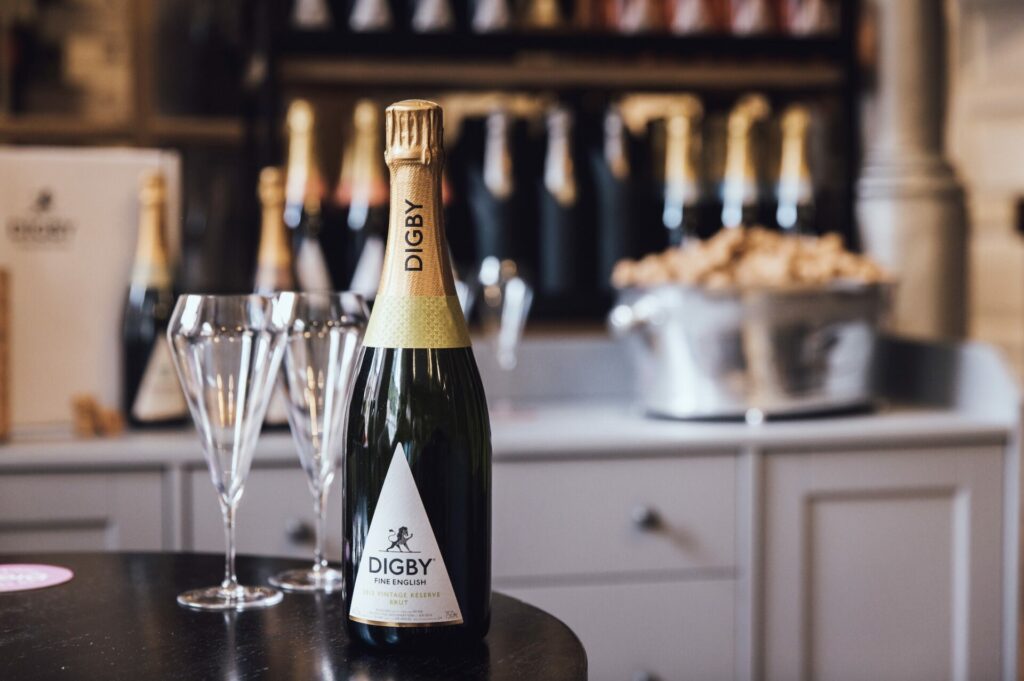
Tell us how the idea of Digby Fine English came about. Had you been drinking?
Jason: Actually, we had! We were visiting a vineyard in the Napa Valley, California, and wondered aloud why, if such a successful adaptation of Champagne could manifest in a sparkling wine from over there, it couldn’t also happen over here…
Though there’s no denying the meteoric rise in standards and sales of English sparkling wine this past 10 or even 20 years, it hardly seems an obvious career choice?
Trevor: Well, that much is true, but it did seem to us that what English sparkling wine needed was a dose of the confidence we’d seen in Napa.
This country has been making amazing wines for years, but we felt there was room for a brand that had a sense of fun and bravado, a very English sense of place and purpose, coupled with a knowing wink.
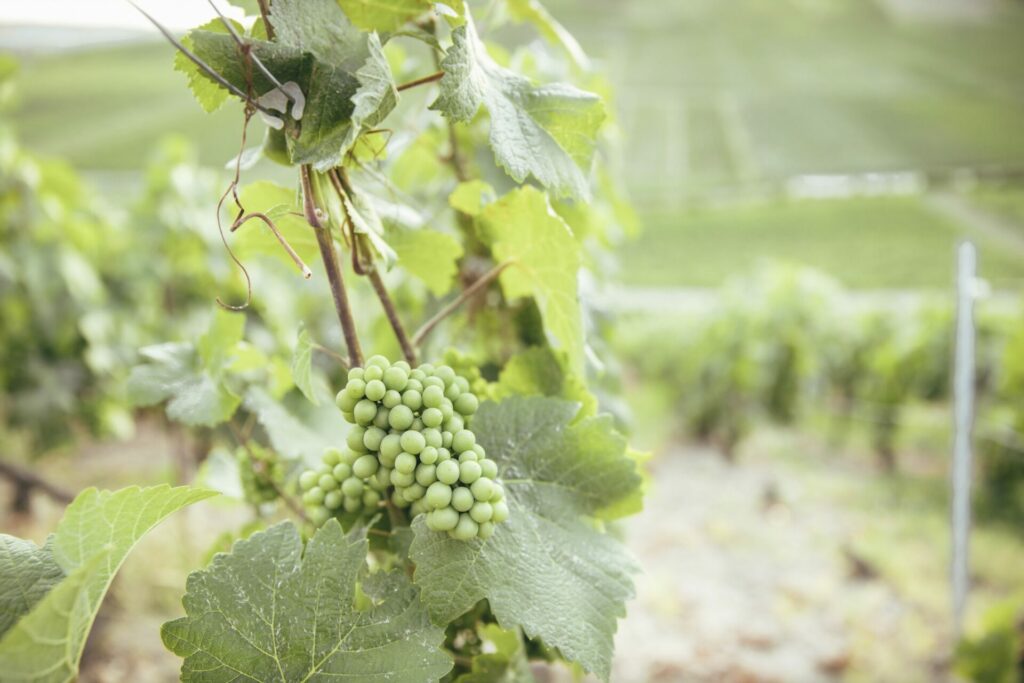
Why choose the south coast of England?
Jason: Any vineyard, anywhere in the world, exists on the basis of the terroir — the soil, the growing conditions, and the climate. England’s South Downs are chalky, very much like the Champagne region of France. So there is symmetry and similarity.
What has been the biggest challenge?
Trevor: There have been many challenges, but essentially winemaking is a mixture of art and science. So you can follow a recipe, and make all of the choices that accord with that, but ultimately you have to sit and wait for the science bit to happen before you know if your interpretation of the art is to standard.
Until a very recent acquisition, you didn’t own a vineyard but paid farmers to grow grapes for you (the French refer to this as négociant). Does that make life easier?
Trevor: The vineyard we now own was one that was previously growing grapes for us, so either model works for us. Though with ownership you have ultimate control, you also have ultimate responsibility.
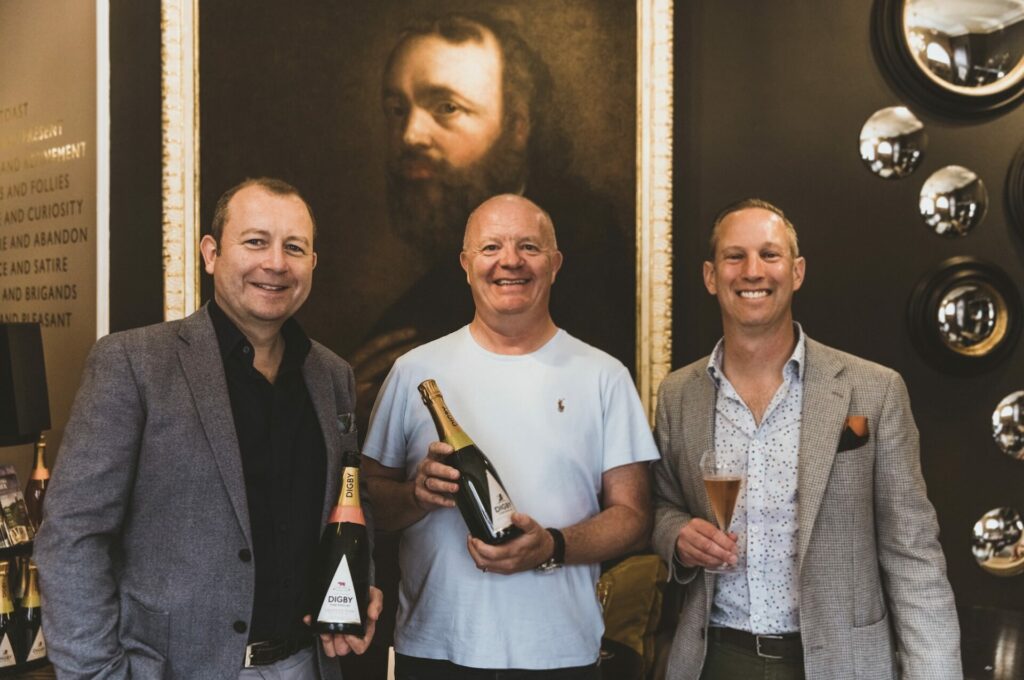
You follow the methode Champenoise — whereby the wine’s second fermentation takes place in the bottle. Is there a little a magic within some French savoir-faire?
Trevor: Absolutely — only the authentic process delivers authentic results. That’s one of a number of reasons — together with our commitment to quality, the blend and the fine details — that Digby has done so well in blind tastings.
You are known, especially, for your pink fizz — named Leander after the famous rowing club that has produced countless Olympic champions. How did that happen?
Jason: At university I was a (not especially good) rower but grew to love the sport. And so, when we had the chance to become the official wine of the Leander Club, it seemed a quintessentially English opportunity. It suits us and our brand, I think.
What’s next for Digby Fine English?
Trevor: Our own vineyard has been a big step, and our range of blends (Reserve Brut, Leander Pink, a flagship vintage two years in every five, a Blanc de Noir) has developed into a really interesting portfolio. So more of the same, we think.
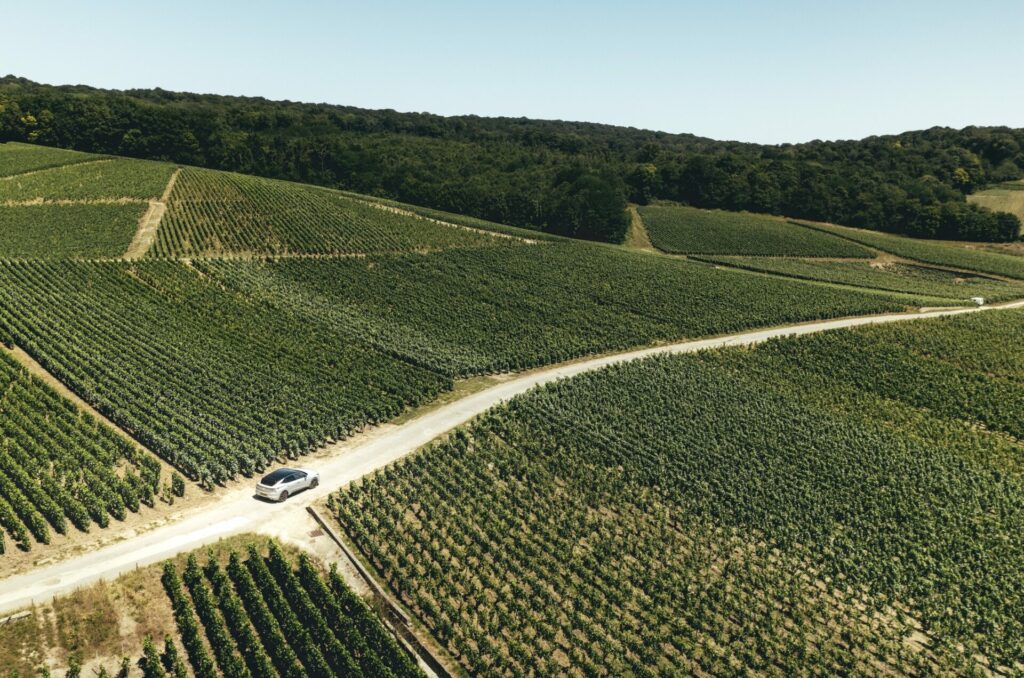
What’s next for us is to take some sample bottles from here, load them into our rather fabulous DS 4 and return to its motherland to meet another winemaking family in the heart of the Champagne region of France. They cannot wait to try the fruits of your labours!
I joked at the outset about DS Automobiles being the biggest car maker you’ve never heard of. They’re a new-ish brand that pride themselves on exclusivity, although they did outsell Lexus across Europe last year.
The DS premise is to embody everything that makes Paris the luxury capital of the world, but in automotive form, and as we head from southern England to northern France via le Shuttle, it’s a proper chance to review the car we’ve been given.
This is the all-new DS 4 model — it’s dripping with tech, looks sleek in style as well as reassuringly expensive. Inside, there’s a glorious cabin finished with first-rate materials. It’s quite lovely in here, and all you see and touch is premium.
And here’s a thing. So many cars nowadays just look like different-sized versions of the same thing, with big wheels and rubber-band tyres, but this stands out in a crowd.
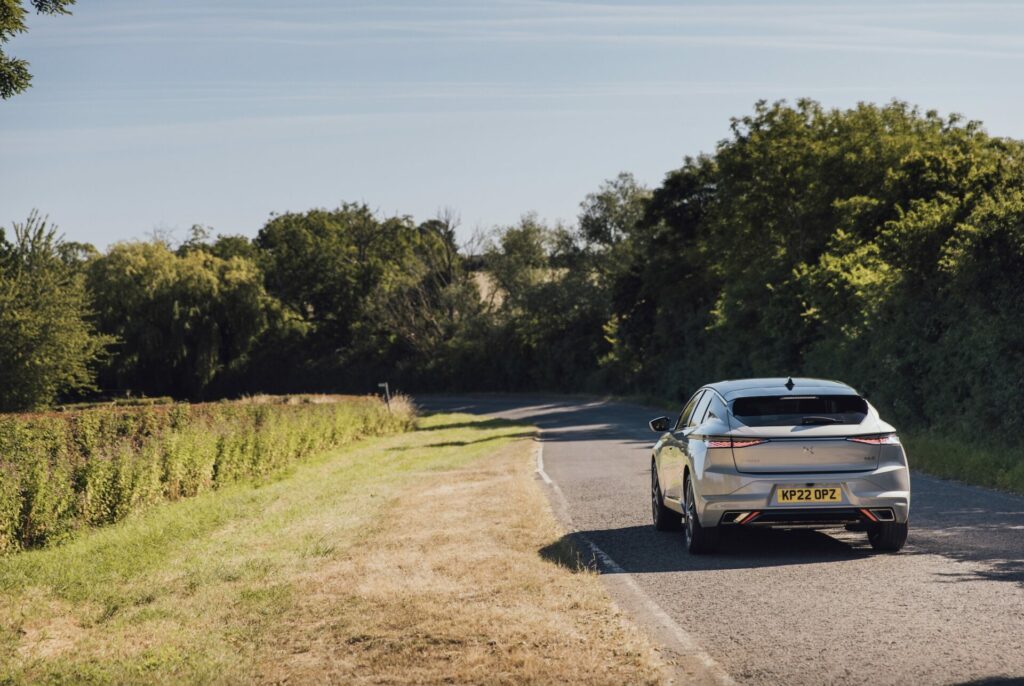
In its Pearl Crystal finish and sitting on 20-inch, diamond-cut, alloy wheels, and with flush-fitting door handles that tuck away rather than disturb the silhouette, the DS 4 is as distinctive as you like, and that’s before you see the light shows front and rear that greet you on start-up and lock-up.
Climb aboard, and it’s so insulating from the outside world when on the inside, and so cossetting, it’s like flying first class when economy is a sea of gently sweating humanity. But without having to buy three flights from BA in the hope you land the one that doesn’t get cancelled.
The ride quality is glorious, the seats so comfy it’s as though your living room has come with you, and — as motorway becomes autoroute and then Champagne-bound Routes Nationale — it becomes clear this could be all the road trip you’ll ever need…
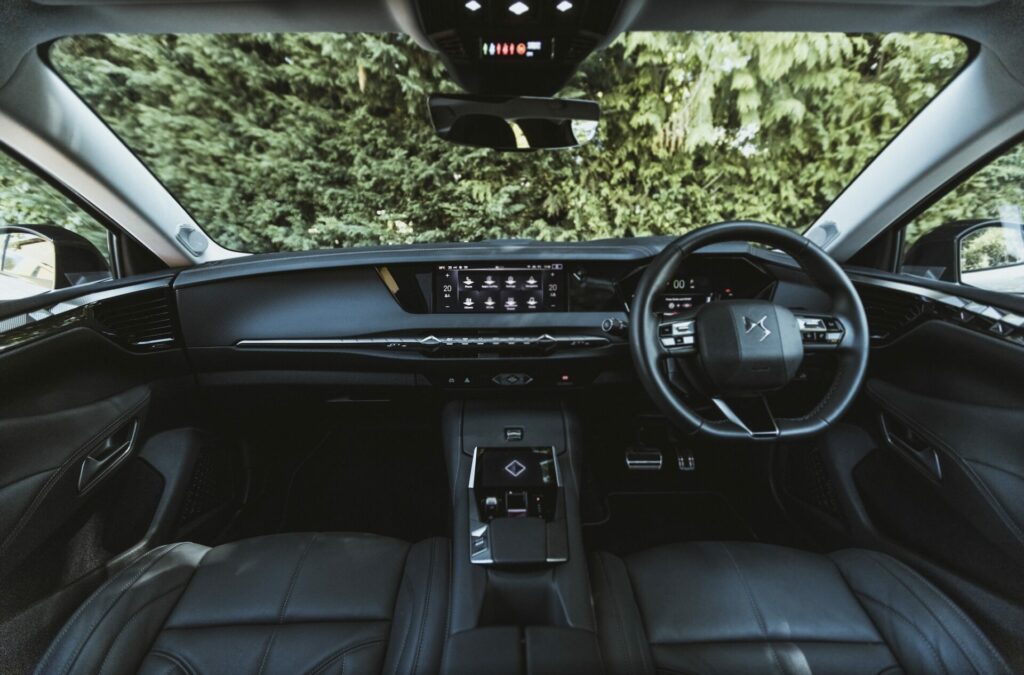
And so to where it all started: the village of Hautvillers and the site of the Abbaye Saint Pierre, formerly home to Dom Pérignon, a French Benedictine monk whose work in the development of sparkling wine was the basis for Champagne as we know it today.
To be able to call sparkling wine Champagne, it has to, of course, be made within the boundaries of France’s Champagne region. And so I’m delighted to say that the family of wine-makers we’ve come to visit, right in the centre of Hautvillers, is the real deal.
The Tribaut vineyards were established here, in 1935, and the second, third and fourth generations of the family all work within the business today.
The grand-daughter of the founder, Valerie, is our guide as we sit among an extraordinary vista that looks down from the hilltop village on acres of vineyards, draped and stretched like green corduroy for miles in every direction.
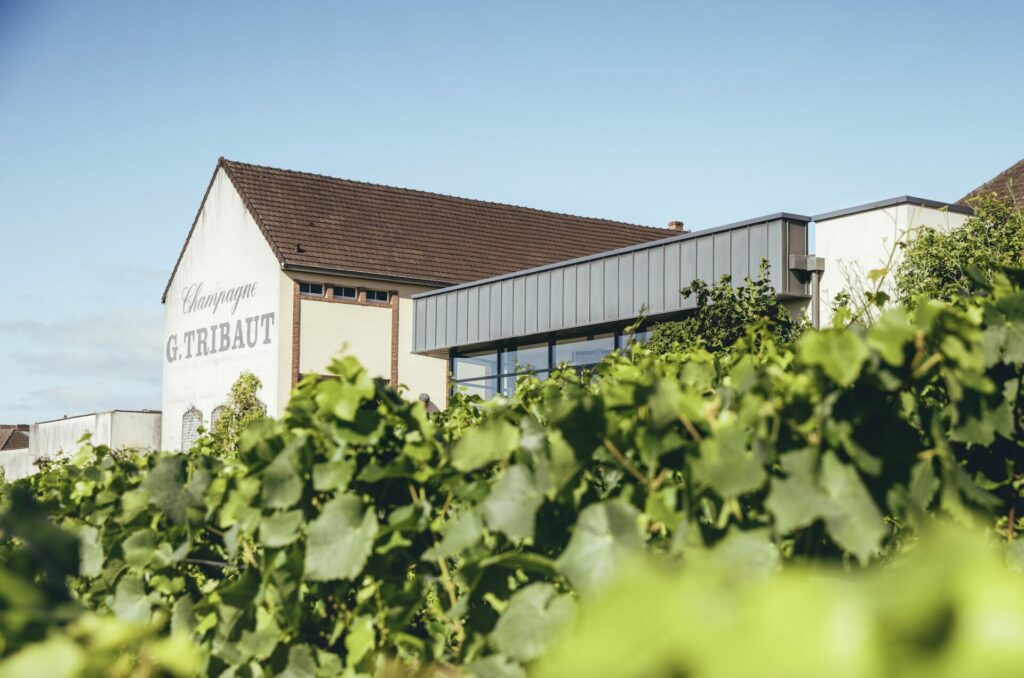
With the recent arrival of your son, Gauthier, into the business, I believe this makes you, now, fourth-generation makers of Champagne here in Hautvillers?
Valerie: It does, yes. Both my grandfather, who established the business, and my father, who developed it into all you see today, worked in the Moët & Chandon vineyards as young men — but to have their own land and their own winery was the dream they made reality. It’s why we cherish every day here.
Although the classic méthode Champenoise has stood the test of time, the family business must have seen extraordinary change in its 87 years?
Valerie: Of course, this is a lifetime’s work literally grown from the ground, and though — over time — we’ve added additional parcels of land and increased our annual output to 200,000 bottles a year (still tiny by the levels of the major brands), and invested in winemaking tech as it has developed, there’s much here my grandfather would recognise and love.
I think there’s a French phrase for that: plus ça change, plus c’est la même chose? The more things change, the more they stay the same?
Valerie [laughs]: That’s exactly right — though when you are making a product using a traditional process, that continuity is a key part of the charm, and what makes our Champagne (or any Champagne) unique.
So the heart of what we do will always stay the same.
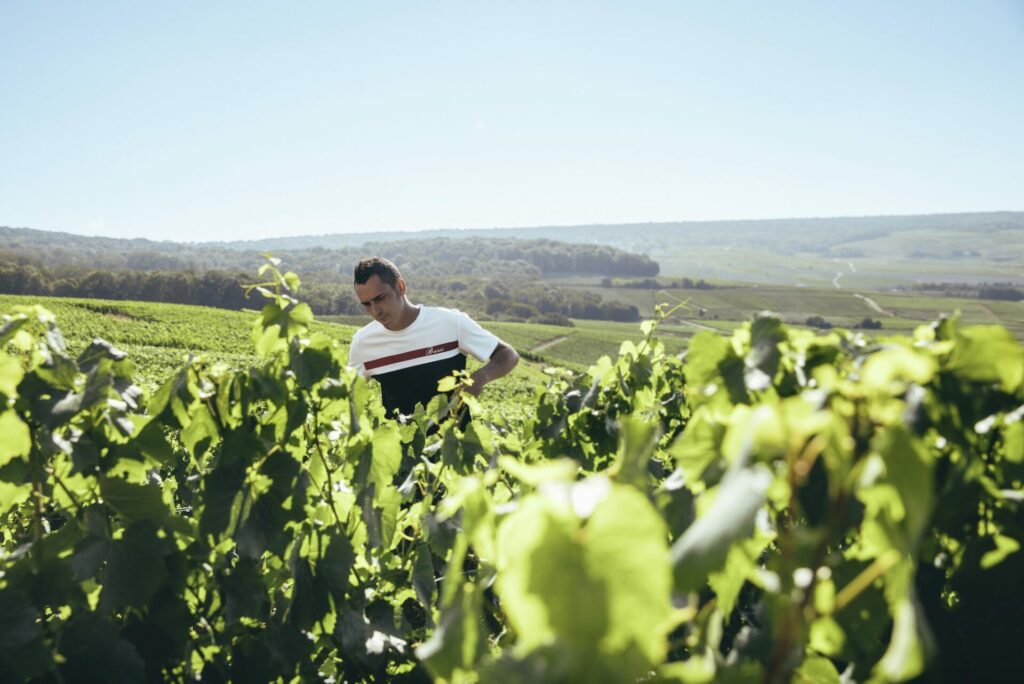
So tell us about the types, and the characteristics of, your wines? Introduce us…
Valerie: Our vineyards have four different soil types at three elevations, and so we are able to grow (and blend) the three requisite grapes for Champagne: Pinot Noir, Pinot Meunier, and Chardonnay.
From these we produce a crisp and fresh Cuvée de Réserve, a delicious, fruitier Rosé premier cru, a sweeter demi-sec and then single-variety wines such as a Blanc de Blancs and a Blanc de Noirs.
We also have, my own blend to my taste, a Grand Cuvée Speciale Premier Cru.
I sense you are proud of the last one — as you should be, it’s quite fabulous and beautifully refined.
Valerie: Thank you! It’s always been that any member of our family wanting to work in the business has, first, to learn to do everything: out in the vineyards, in the winery, in sales, marketing and administration.
So it’s wonderful, having earned the right to be part of this, to make something of my own and have people enjoy it.
You are aware, of course, that we have travelled from the UK — though in a French car, so a little piece of France travels with us everywhere. But a little piece of England came too — some Digby Fine English sparkling wine from a small, independent maker. Would you like to try some?
Valerie: I would! As winemakers we should always be interested in everything anyone else is doing, so I am intrigued by the story you have told me.
(We pour, first, a glass of Digby 2013 Vintage Reserve Brut and then a glass of Leander Pink NV.) This is not a competition or anything like it: Champagne is Champagne, English fizz is English fizz. But you are the experts, this is a premier cru village, our question is a simple one of entente cordiale: have our friends at Digby honoured the méthode Champenoise?
Valerie swirls the poured samples, inhales deeply, and then tastes both twice, sipping water in between. She’s nothing if not a pro, with some of the business of show.
Valerie: So I should be honest, I think?
Of course.
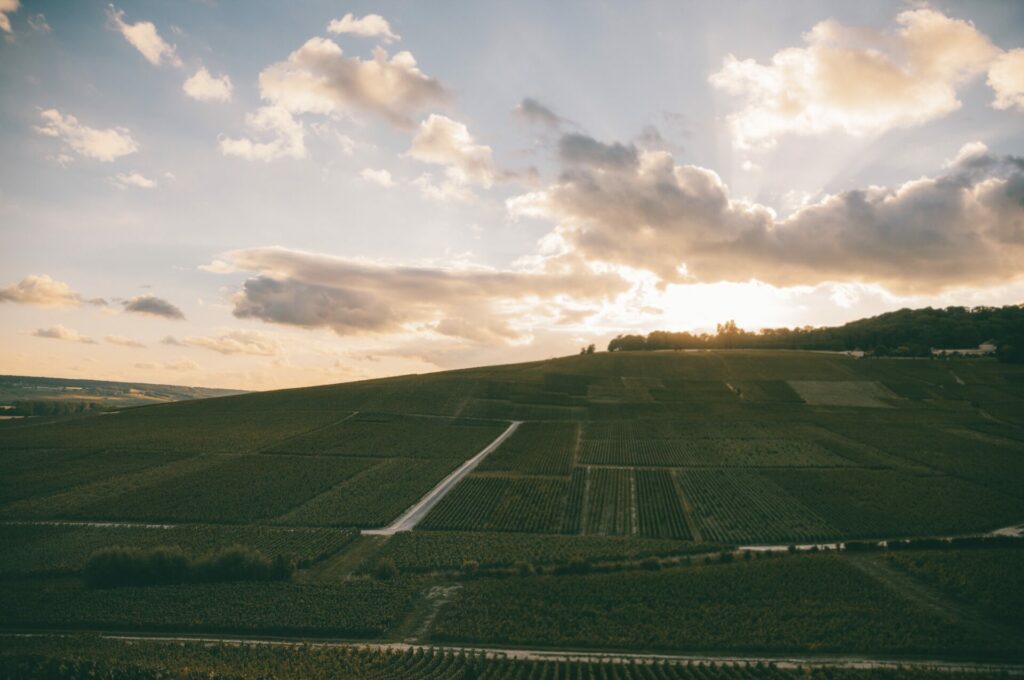
Valerie: The Vintage Brut is delicate, with very fine bubbles, and so refined — it would be a nice aperitif. But the finish, for me, is a little short — I like a longer finish, which hangs around in your mouth a little more.
For me, a little more Meunier in the blend would do that, although as the wine warms it gives you more. So don’t serve too cold, perhaps?
The Leander Pink rosé, again for me, is much nicer because it has that longer finish. It has a fuller flavour, really strong bubbles and is very refreshing. I like it. So you can tell them that’s a yes from me!
We promise her we will, delighted and relieved in equal measure, and say our goodbyes while — purely in the interests of an investigative piece, you understand — dropping a case or two of the Tribaut wares into the DS 4’s boot. No travel is complete without souvenirs, after all…
The LGBTQ community have never wanted for the entrepreneurial or the creative: les artisans, as we’d have it. But 21st-century role models and activists are different to those that came before.
Digby’s Trevor and Jason, a married couple, are a thoroughly modern family with an English sparkling wine business. A business into which, one day, their son Paxton might follow, just as four generations of Tribaut have in Hautvillers.
So much of that would have been unthinkable when some of the wine hereabouts was still grapes. And we should embrace, support and celebrate that positive change.
Attitude loves people and brands who break the mould. Digby have certainly done that, as have our friends at DS — in bringing everything that is celebrated about Paris into the world of cars — and what’s not to love about that?
Long live unique, long live daring, long live les artisans.
For more information on DS Automobiles’ new DS 4 visit dsautomobiles.co.uk.
